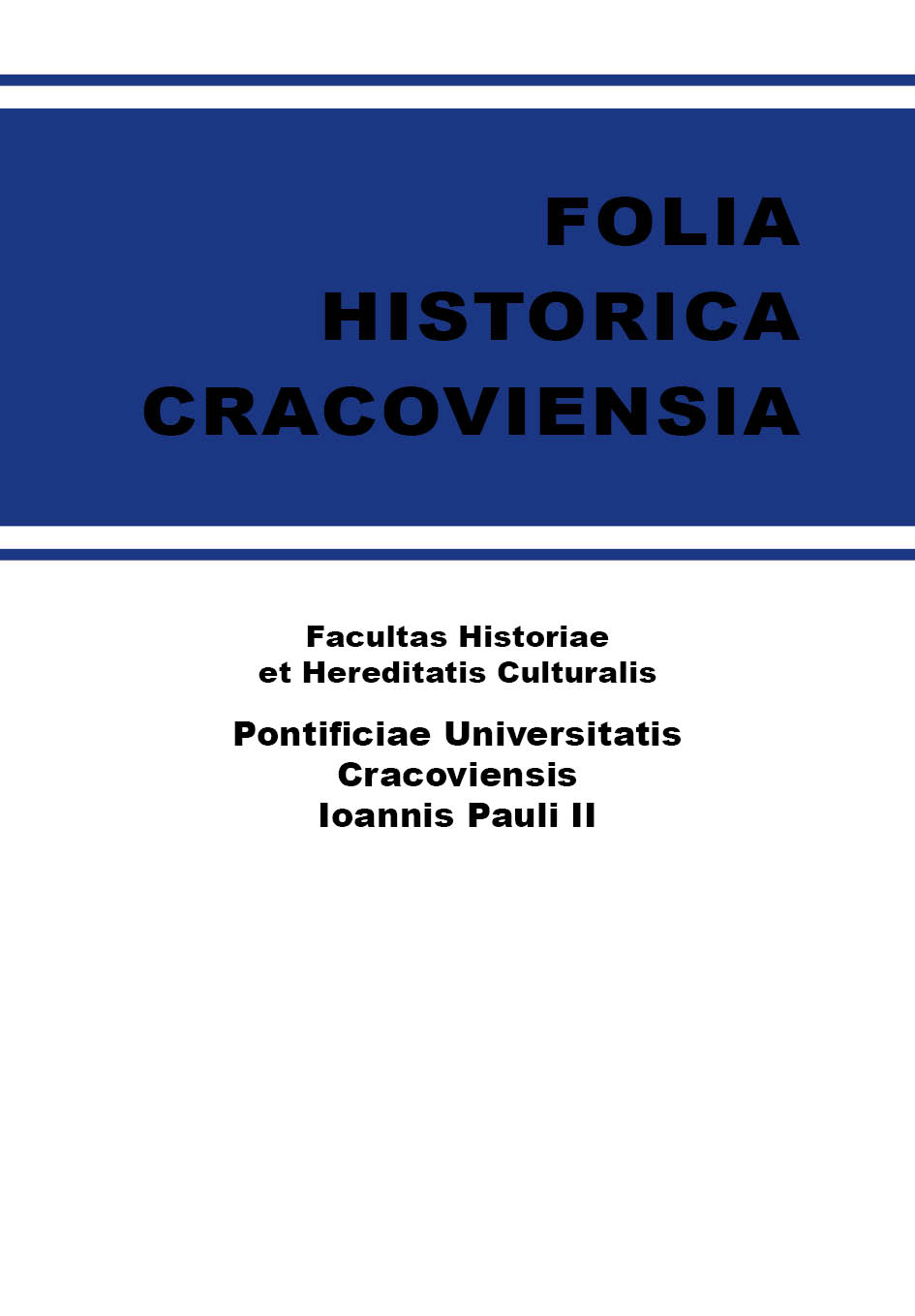The history of the foundation of the Calced Carmelite Church in Wola Gułowska
DOI:
https://doi.org/10.15633/fhc.2086Keywords:
Calced Carmelites, Wola Gułowska, Krasiński familyAbstract
In 1633, Ludwik Krasiński († after 1644) was given a consent by Bishop Jan Albert Waza to establish a Calced Carmelite monastery on Krasiński’s property in Wola Gułowska. The foundation of the Carmelite congregation, far from much frequented trails, was in line with eremitic ideas and spirituality of the order. The Wola Gułowska monastery became a second largest (after Krakow) Carmelite monastery in terms of the number of monks. The monastery in Wola Gułowska had a formative character, with the novitiate and philosophical studies. In the 17th century the church became an important Marian sanctuary, as it possessed a much venerated painting of the Virgin Mary with the baby Jesus dating back to the early 15th, late 16th century.The construction of the church, commenced in 1659, took considerable funds. Not only was it supported by the Krasiński family, but also by many representatives of aristocratic families, local landlords and priests, such as canons Michał Krassowski and Mikołaj Firlej. The three-nave basilica church was being built for over 100 years and in several stages. It was the funds gathered in the 18th century that allowed the builders to complete the two-tower partitioned facade in the years 1770–1780. In the middle of the 18th century, the altars were made in the church by monastic sculptors Grzegorz Kaczyrek and Izydor Mastalski. The seventeenth-century designers of the church or of its eighteenth century façade still remain unknown.
References
Primary sources
Archiwum Kurii Metropolitarnej w Krakowie [AKMK], Acta actorum, decretum, sentarium, erectionum, fundationum…, 1658, vol. 1, sheet 371v.
AKMK, Acta actorum…, 1658, vol. 1, sheet 366–382.
AKMK, Acta episcopolia, 1658, 1659, vol. 59, p. 210.
AKMK, Acta episcopolia, 1659, vol. 59, sheet 382.
Archiwum Karmelitów w Oborach [AKB], Copia consignationis summrum… Conventus Guloviensis, no. 46, sheet 1.
Archiwum Prowincji Karmelitów w Krakowie na Piasku [APKK], Acta et decreta capitulorum generalium, provincialum et diffinitorium, vol. 1, sheet 121.
APKK, Acta et decreta capitulorum generalium, provincialum et diffinitorium, vol. 1, sheet 92.
APKK, Liber actum capitulorum 1603–1667, 19 martii 1645, sessio III.
Boniecki A., Herbarz polski, t. 9, Warszawa 1906.
The church in Wola Gułowska, occasional print from the 17th c.: Historya. Początek miejsca Gułowskiego.
Niesiecki K., Herbarz polski, vol. 8, Lipsk 1841.
Secondary sources
Bąkowa J., Krasiński Ludwik h. Ślepowron, [in:] Polski słownik biograficzny, t. 15/2, Wrocław–Warszawa–Kraków 1970, p. 186.
Kolak W., Karmelici, [in:] Encyklopedia katolicka, t. 8, Lublin 2000.
Kowalczyk J., Architektura sakralna między Wisłą a Bugiem, [in:] Dzieje Lubelszczyzny, t. 6, red. T. Chrzanowski, Lublin 1992.
Kowalczyk J., Architektura, [in:] Sztuka polska. Późny barok, rokoko, klasycyzm (XVIII wiek), Warszawa 2016, p. 190–191.
Łabaj Z., Kościół parafialny dawniej karmelitów trzewiczkowych w Woli Gułowskiej, “Roczniki Humanistyczne” 15 (1967) z. 4, p. 96.
Rolska I., “Miasto ludne i bogate, odpowiednie do walczenia z herezją”. O fundacjach zakonnych w siedemnastowiecznym Lublinie, [in:] Sztuka po Trydencie, red. K. Kuczman, rev. A. Witko, Kraków 2014, p. 277–278.
Rolska I., Firlejowie Leopardzi. Studia nad patronatem i fundacjami artystycznymi w XVI–XVII wieku, Lublin 2009.
Skrabski J., Paolo Fontana nadworny architekt Sanguszków, Tarnów 2007.
Zdziarska Z., Kościół i klasztor Misjonarzy w Siemiatyczach w pierwszej połowie XVIII wieku, “Kwartalnik Architektury i Urbanistyki” 36 (1991) z. 2, p. 104–110.
Wanat J., Karmelitańska sztuka, [w:] Encyklopedia katolicka, t. 8, Lublin 2000, col. 838.
Downloads
Published
Issue
Section
License
Authors who publish with this journal agree to the following terms:
- Authors retain the copyright and full publishing rights without restrictions, and grant the journal right of first publication with the work simultaneously licensed under a Creative Commons Attribution 4.0 International License that allows others to share the work with an acknowledgement of the work's authorship and initial publication in this journal.
- Authors are able to enter into separate, additional contractual arrangements for the non-exclusive distribution of the journal's published version of the work (e.g., post it to an institutional repository or publish it in a book), with an acknowledgement of its initial publication in this journal.
- Authors are permitted and encouraged to post their work online (e.g., in institutional repositories or on their website) prior to and during the submission process, as it can lead to productive exchanges, as well as earlier and greater citation of published work (See The Effect of Open Access).

